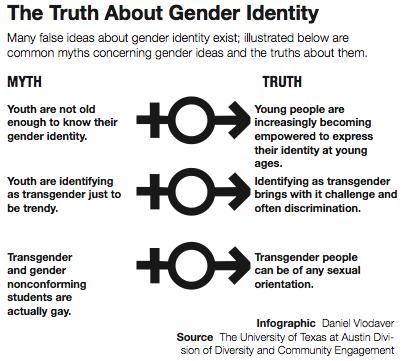Class teaches perspective
Embedded health promotes sexuality understanding

December 19, 2014
Not many high schoolers know the difference between sexual identity, gender identity and sexual orientation.
Where sexual identity refers to how people define their own sexuality, sexual orientation refers to the sex of those to whom a person is sexually attracted.
This is different from gender identity, which refers to a person’s sense of self as a male, female or transgender, according to the American Psychology Association.
Twelfth grade embedded health curriculum includes a student panel comprised of people from different grades with different experiences regarding their sexuality.
The panelists explain different terms and definitions that are new for many people, and members of the panel share their personal story with the class.
The panel reviews terms established by the queer community to describe different gender identities such as: bigender, androgenous, intersex, transgender and cisgender.
The goal of the heis to shift people’s mindset from a gender binary system to a more fluid and inclusive view toward the genders.
Although conscious awareness to how people identify themselves may be most common among sexual minorities, a thorough knowledge of the terms different people choose to identify with is important.
The health panel is comprised of four students of diverse sexual orientations who have personal experience with others misusing terms or being intentionally or unintentionally offensive toward people of different sexualities and non-binary genders.
These students share their opinions and stories about the process of coming out and how their friends and family responded.
Most of what the panel has chosen to share is very personal, and it is commendable students have decided to share such intimate experiences with their peers for the benefit of a more well-rounded sexual health education.
As confusing as learning new terminology with similar prefixes may be, knowing the correct way to address others is essential for a functioning society.
Unfamiliarity with the way a person chooses to identify is understandable, especially given the fact many of these terms continue to evolve. But it is necessary people be able to address the topic of sexuality in an informed, inoffensive way.
Being a minority of any kind has its difficulties, but it is important to try and prevent unnecessary struggles through educating the population.
By including this sexuality panel in embedded health, Park is taking a step toward providing everyone with a comfortable learning environment and a safe community.
Just because a person identifies with the sexual majority doesn’t mean he or she is exempt from at the very least being aware of other people’s sexuality and respecting that by being educated.



